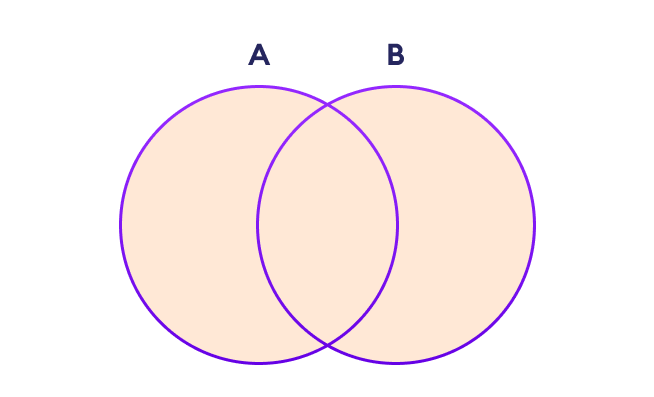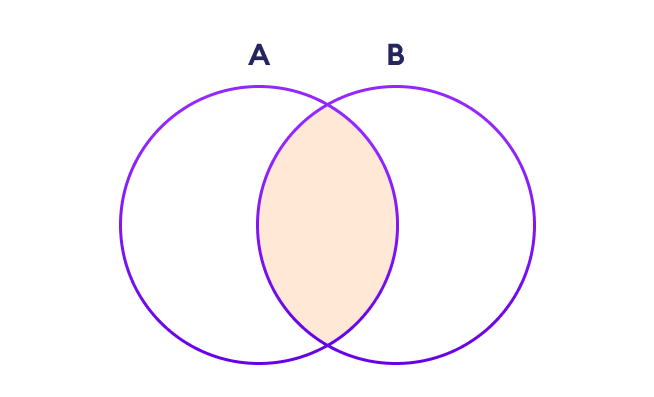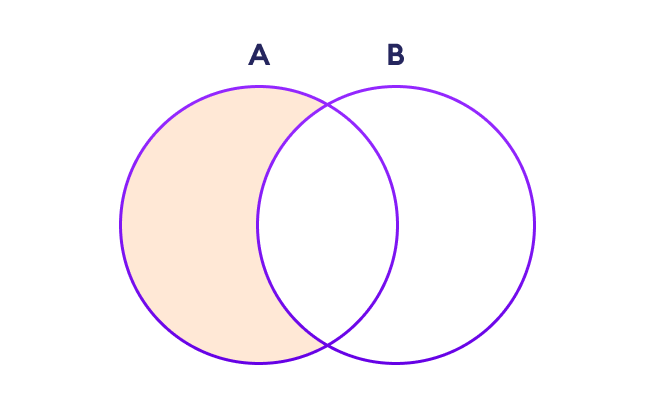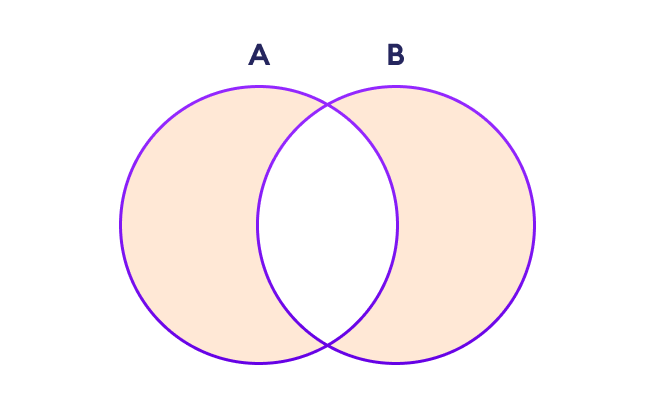A set is a collection of unique data, meaning that elements within a set cannot be duplicated.
For instance, if we need to store information about student IDs, a set is suitable since student IDs cannot have duplicates.

Create a Set in Python
In Python, we create sets by placing all the elements inside curly braces {}, separated by commas.
A set can have any number of items and they may be of different types (integer, float, tuple, string, etc.). But a set cannot have mutable elements like lists, sets or dictionaries as its elements.
Let's see an example,
# create a set of integer type
student_id = {112, 114, 116, 118, 115}
print('Student ID:', student_id)
# create a set of string type
vowel_letters = {'a', 'e', 'i', 'o', 'u'}
print('Vowel Letters:', vowel_letters)
# create a set of mixed data types
mixed_set = {'Hello', 101, -2, 'Bye'}
print('Set of mixed data types:', mixed_set)
Output
Student ID: {112, 114, 115, 116, 118}
Vowel Letters: {'u', 'a', 'e', 'i', 'o'}
Set of mixed data types: {'Hello', 'Bye', 101, -2}
In the above example, we have created different types of sets by placing all the elements inside the curly braces {}.
Note: When you run this code, you might get output in a different order. This is because the set has no particular order.
Create an Empty Set in Python
Creating an empty set is a bit tricky. Empty curly braces {} will make an empty dictionary in Python.
To make a set without any elements, we use the set() function without any argument. For example,
# create an empty set
empty_set = set()
# create an empty dictionary
empty_dictionary = { }
# check data type of empty_set
print('Data type of empty_set:', type(empty_set))
# check data type of dictionary_set
print('Data type of empty_dictionary:', type(empty_dictionary))
Output
Data type of empty_set: <class 'set'> Data type of empty_dictionary: <class 'dict'>
Here,
- empty_set - an empty set created using
set() - empty_dictionary - an empty dictionary created using
{}
Finally, we have used the type() function to know which class empty_set and empty_dictionary belong to.
Duplicate Items in a Set
Let's see what will happen if we try to include duplicate items in a set.
numbers = {2, 4, 6, 6, 2, 8}
print(numbers) # {8, 2, 4, 6}
Here, we can see there are no duplicate items in the set as a set cannot contain duplicates.
Add and Update Set Items in Python
Sets are mutable. However, since they are unordered, indexing has no meaning.
We cannot access or change an element of a set using indexing or slicing. The set data type does not support it.
Add Items to a Set in Python
In Python, we use the add() method to add an item to a set. For example,
numbers = {21, 34, 54, 12}
print('Initial Set:',numbers)
# using add() method
numbers.add(32)
print('Updated Set:', numbers)
Output
Initial Set: {34, 12, 21, 54}
Updated Set: {32, 34, 12, 21, 54}
In the above example, we have created a set named numbers. Notice the line,
numbers.add(32)
Here, add() adds 32 to our set.
Update Python Set
The update() method is used to update the set with items other collection types (lists, tuples, sets, etc). For example,
companies = {'Lacoste', 'Ralph Lauren'}
tech_companies = ['apple', 'google', 'apple']
# using update() method
companies.update(tech_companies)
print(companies)
# Output: {'google', 'apple', 'Lacoste', 'Ralph Lauren'}
Here, all the unique elements of tech_companies are added to the companies set.
Remove an Element from a Set
We use the discard() method to remove the specified element from a set. For example,
languages = {'Swift', 'Java', 'Python'}
print('Initial Set:',languages)
# remove 'Java' from a set
removedValue = languages.discard('Java')
print('Set after remove():', languages)
Output
Initial Set: {'Python', 'Swift', 'Java'}
Set after remove(): {'Python', 'Swift'}
Here, we have used the discard() method to remove 'Java' from the languages set.
Built-in Functions with Set
Here are some of the popular built-in functions that allow us to perform different operations on a set.
| Function | Description |
|---|---|
| all() | Returns True if all elements of the set are true (or if the set is empty). |
| any() | Returns True if any element of the set is true. If the set is empty, returns False. |
| enumerate() | Returns an enumerate object. It contains the index and value for all the items of the set as a pair. |
| len() | Returns the length (the number of items) in the set. |
| max() | Returns the largest item in the set. |
| min() | Returns the smallest item in the set. |
| sorted() | Returns a new sorted list from elements in the set(does not sort the set itself). |
| sum() | Returns the sum of all elements in the set. |
Iterate Over a Set in Python
fruits = {"Apple", "Peach", "Mango"}
# for loop to access each fruits
for fruit in fruits:
print(fruit)
Output
Mango Peach Apple
Here, we have used for loop to iterate over a set in Python.
Find Number of Set Elements
We can use the len() method to find the number of elements present in a Set. For example,
even_numbers = {2,4,6,8}
print('Set:',even_numbers)
# find number of elements
print('Total Elements:', len(even_numbers))
Output
Set: {8, 2, 4, 6}
Total Elements: 4
Here, we have used the len() method to find the number of elements present in a Set.
Python Set Operations
Python Set provides different built-in methods to perform mathematical set operations like union, intersection, subtraction, and symmetric difference.
Union of Two Sets
The union of two sets A and B includes all the elements of sets A and B.

We use the | operator or the union() method to perform the set union operation. For example,
# first set
A = {1, 3, 5}
# second set
B = {0, 2, 4}
# perform union operation using |
print('Union using |:', A | B)
# perform union operation using union()
print('Union using union():', A.union(B))
Output
Union using |: {0, 1, 2, 3, 4, 5}
Union using union(): {0, 1, 2, 3, 4, 5}
Note: A|B and union() is equivalent to A ⋃ B set operation.
Set Intersection
The intersection of two sets A and B include the common elements between set A and B.

In Python, we use the & operator or the intersection() method to perform the set intersection operation. For example,
# first set
A = {1, 3, 5}
# second set
B = {1, 2, 3}
# perform intersection operation using &
print('Intersection using &:', A & B)
# perform intersection operation using intersection()
print('Intersection using intersection():', A.intersection(B))
Output
Intersection using &: {1, 3}
Intersection using intersection(): {1, 3}
Note: A&B and intersection() is equivalent to A ⋂ B set operation.
Difference between Two Sets
The difference between two sets A and B include elements of set A that are not present on set B.

We use the - operator or the difference() method to perform the difference between two sets. For example,
# first set
A = {2, 3, 5}
# second set
B = {1, 2, 6}
# perform difference operation using &
print('Difference using &:', A - B)
# perform difference operation using difference()
print('Difference using difference():', A.difference(B))
Output
Difference using &: {3, 5}
Difference using difference(): {3, 5}
Note: A - B and A.difference(B) is equivalent to A - B set operation.
Set Symmetric Difference
The symmetric difference between two sets A and B includes all elements of A and B without the common elements.

In Python, we use the ^ operator or the symmetric_difference() method to perform symmetric differences between two sets. For example,
# first set
A = {2, 3, 5}
# second set
B = {1, 2, 6}
# perform difference operation using &
print('using ^:', A ^ B)
# using symmetric_difference()
print('using symmetric_difference():', A.symmetric_difference(B))
Output
using ^: {1, 3, 5, 6}
using symmetric_difference(): {1, 3, 5, 6}
Check if two sets are equal
We can use the == operator to check whether two sets are equal or not. For example,
# first set
A = {1, 3, 5}
# second set
B = {3, 5, 1}
# perform difference operation using &
if A == B:
print('Set A and Set B are equal')
else:
print('Set A and Set B are not equal')
Output
Set A and Set B are equal
In the above example, A and B have the same elements, so the condition
if A == B
evaluates to True. Hence, the statement print('Set A and Set B are equal') inside the if is executed.
Other Python Set Methods
There are many set methods, some of which we have already used above. Here is a list of all the methods that are available with the set objects:
| Method | Description |
|---|---|
| add() | Adds an element to the set |
| clear() | Removes all elements from the set |
| copy() | Returns a copy of the set |
| difference() | Returns the difference of two or more sets as a new set |
| difference_update() | Removes all elements of another set from this set |
| discard() | Removes an element from the set if it is a member. (Do nothing if the element is not in set) |
| intersection() | Returns the intersection of two sets as a new set |
| intersection_update() | Updates the set with the intersection of itself and another |
| isdisjoint() | Returns True if two sets have a null intersection |
| issubset() | Returns True if another set contains this set |
| issuperset() | Returns True if this set contains another set |
| pop() | Removes and returns an arbitrary set element. Raises KeyError if the set is empty |
| remove() | Removes an element from the set. If the element is not a member, raises a KeyError |
| symmetric_difference() | Returns the symmetric difference of two sets as a new set |
| symmetric_difference_update() | Updates a set with the symmetric difference of itself and another |
| union() | Returns the union of sets in a new set |
| update() | Updates the set with the union of itself and others |
Also Read: